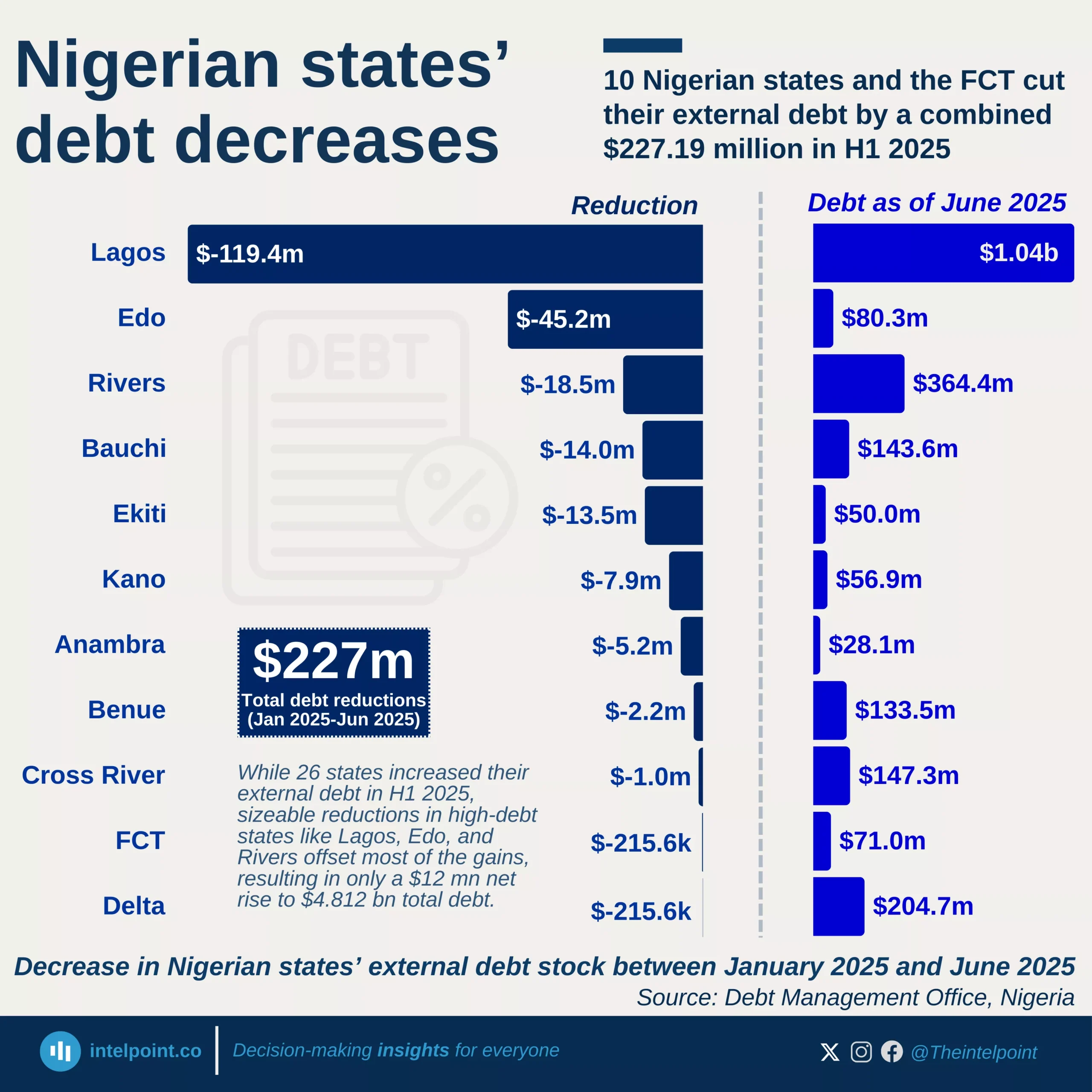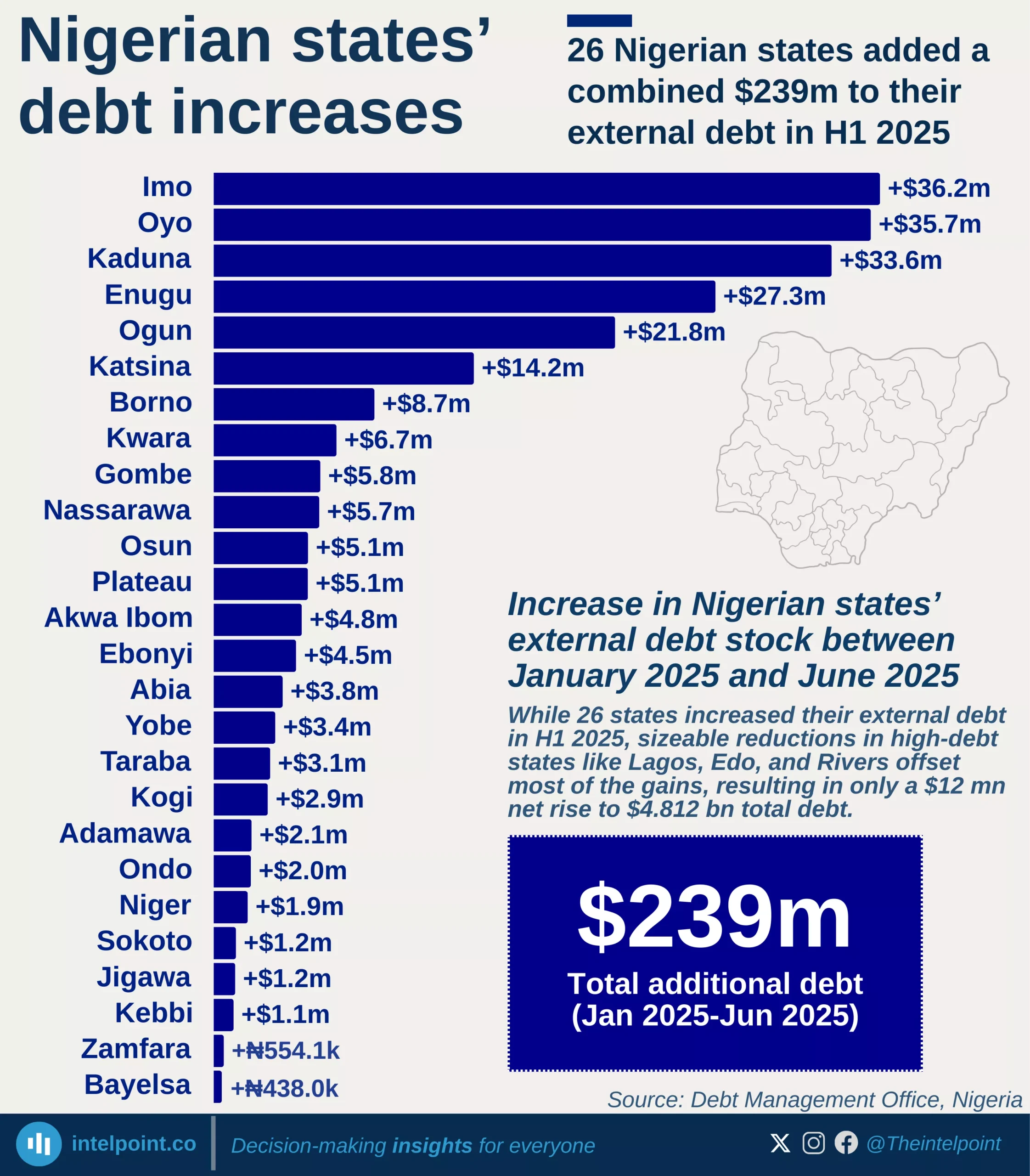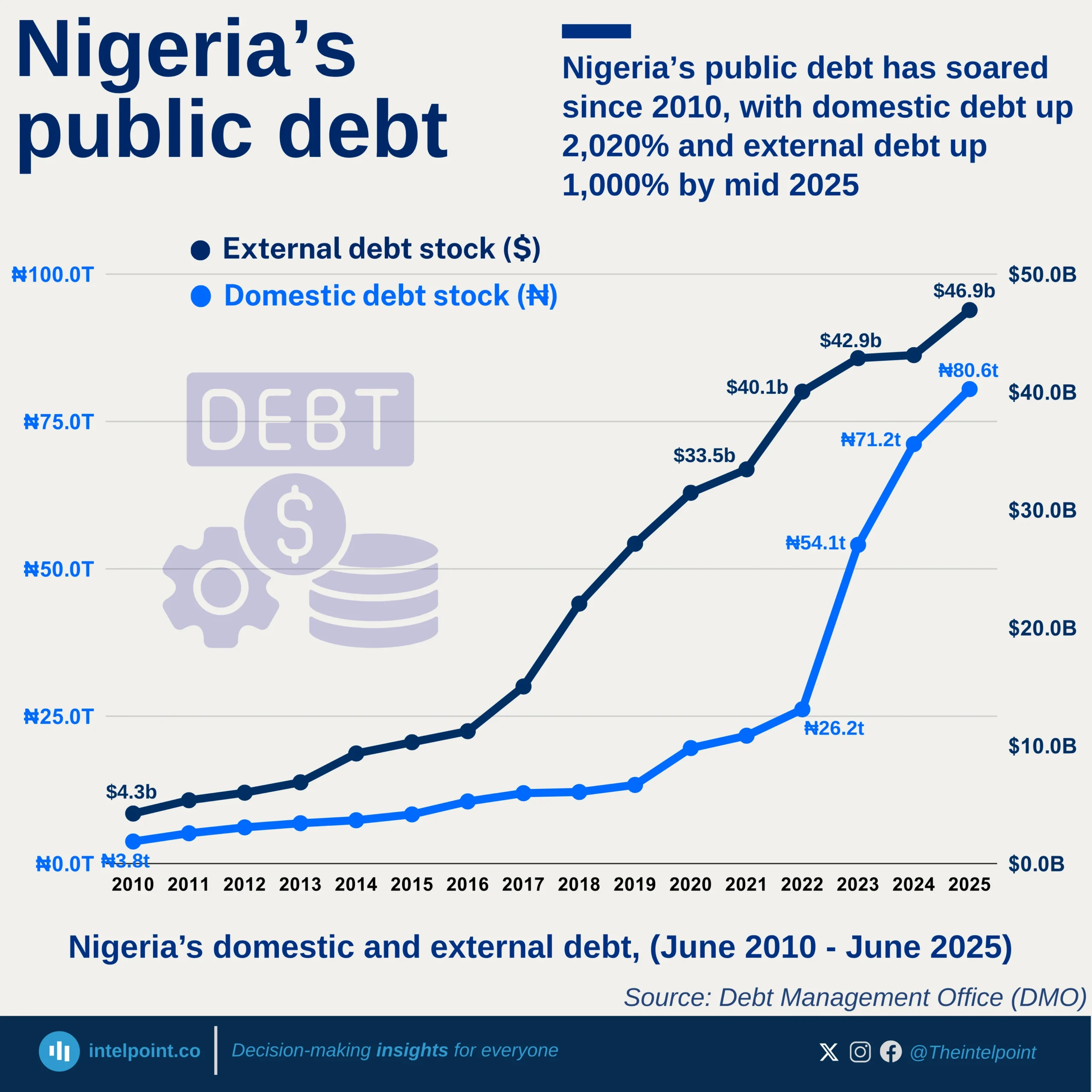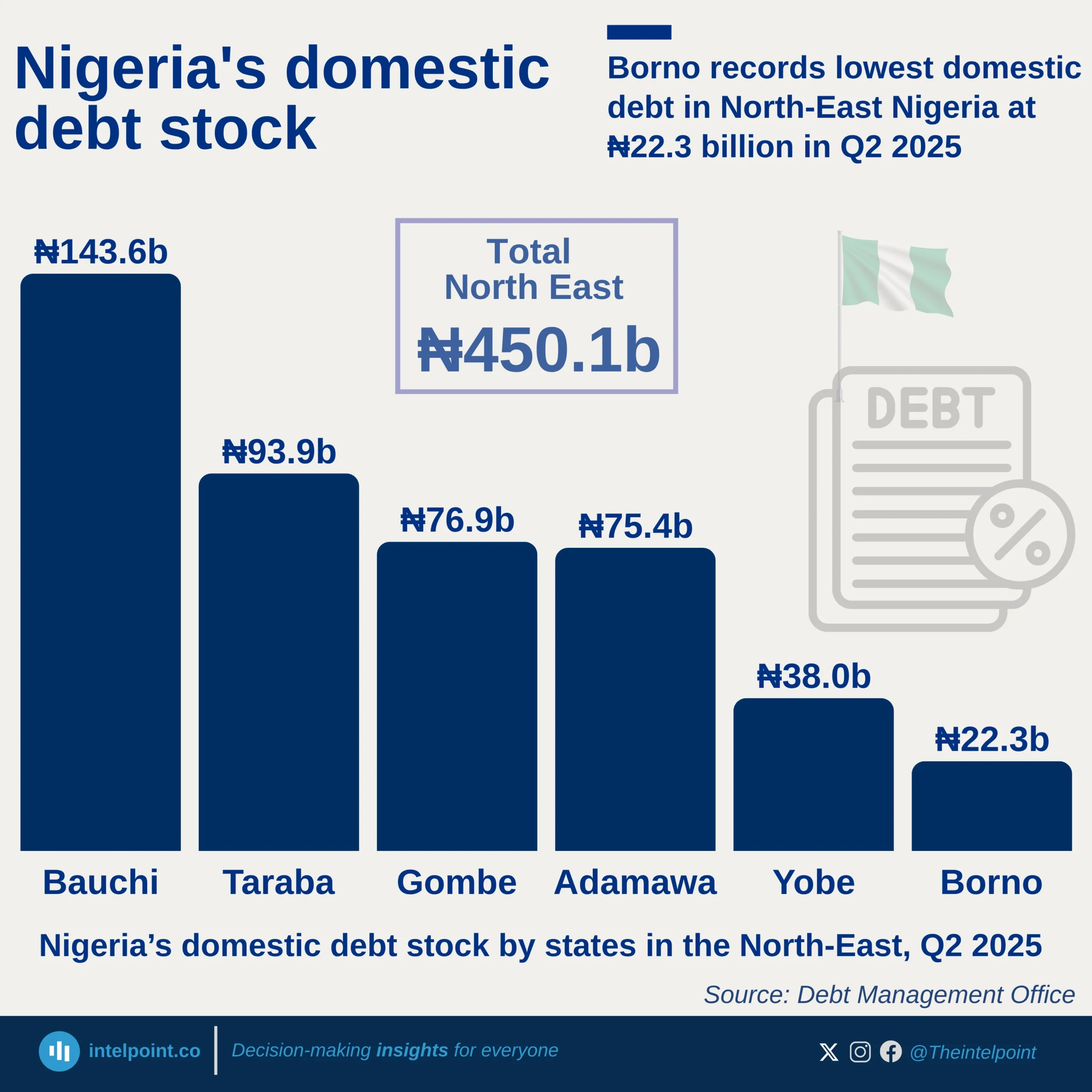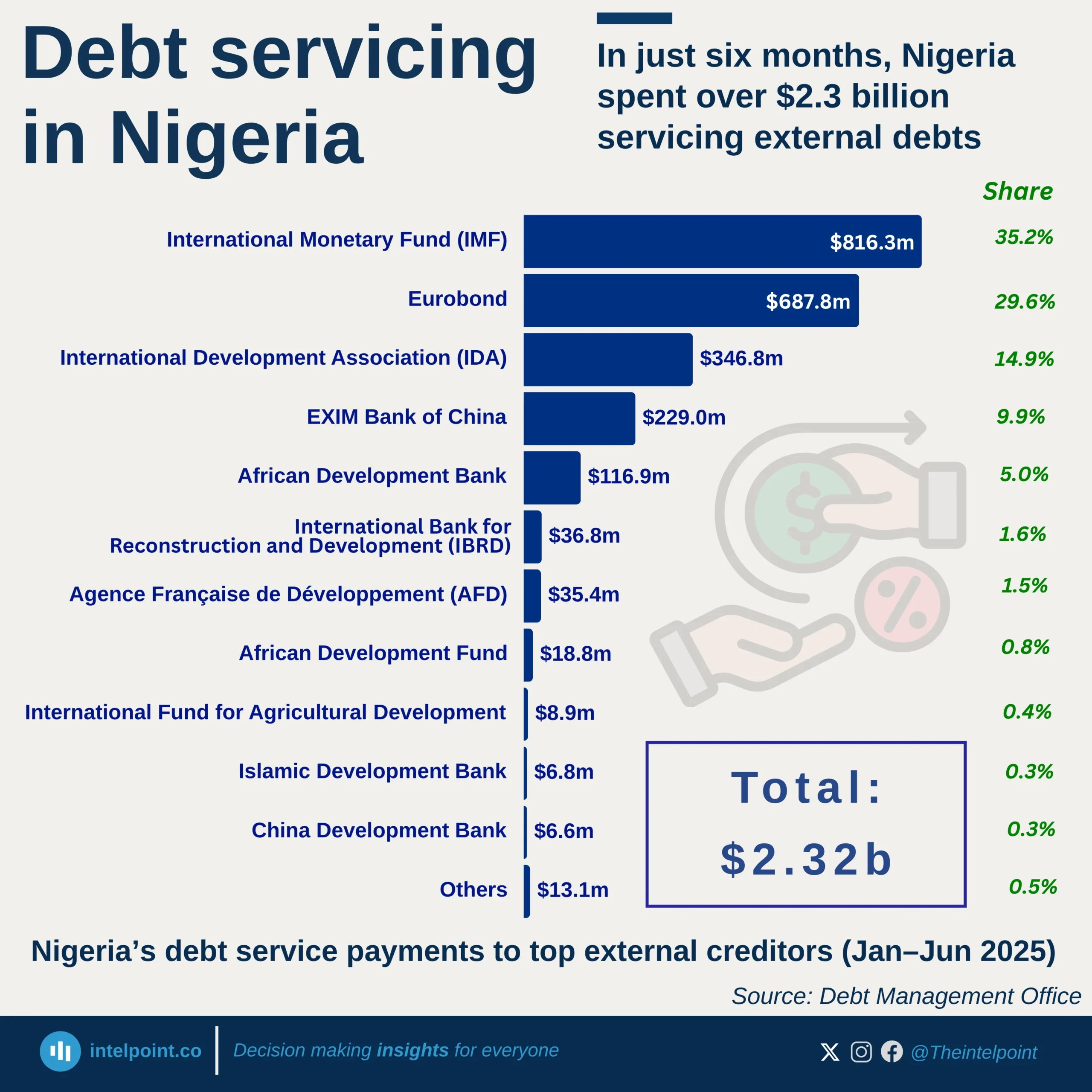Nigeria’s outstanding debt to the World Bank stood at $180 million in 1970. Over the next three decades, it increased gradually, reaching around $3.49 billion by 1995. The balance dipped slightly in the early 2000s, settling below $2 billion by 2001, before beginning a new upward trend.
By 2010, the figure crossed $3.7 billion and continued climbing steadily. The sharpest buildup occurred in the last decade: from $5.28 billion in 2013 to $17.81 billion in 2024. That’s an increase of over $12.5 billion in just 11 years. This pattern reflects Nigeria’s expanding portfolio of World Bank loans and projects, as well as slower reductions in debt stock over time, leaving the country with significantly larger outstanding obligations at year-end.
